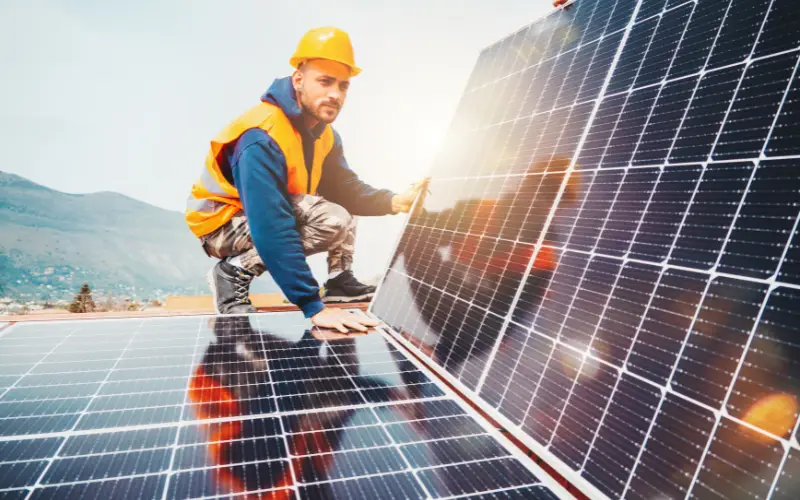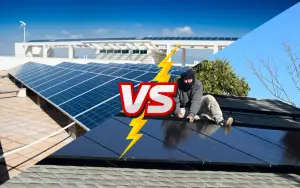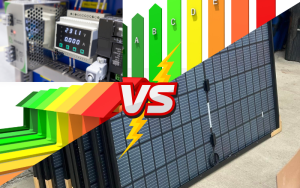INTRO
Solar power systems are revolutionizing the way we harness energy, offering clean, renewable alternatives to traditional power sources. If you’re considering switching to solar, understanding the basics and functionality of these systems is the first step toward making an informed decision. From their components to their benefits, this guide covers everything you need to know about solar power systems and how they contribute to efficient energy solutions in the USA.
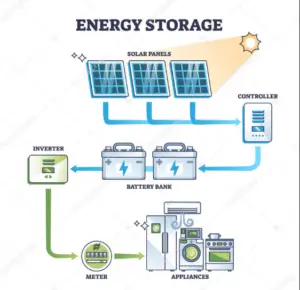 What Are Solar Power Systems?
What Are Solar Power Systems?
Solar power systems are setups that convert sunlight into electricity. They consist of several key components working together to capture, convert, and store solar energy for household or commercial use. These systems are a cornerstone of renewable energy, providing eco-friendly alternatives to fossil fuels.
Key Components of a Solar Power System
Understanding the components of a solar power system is crucial for grasping how they work:
- Solar Panels: Solar panels, or photovoltaic (PV) panels, capture sunlight and convert it into direct current (DC) electricity. They are typically mounted on rooftops or open spaces with maximum sun exposure.
- Inverter: The inverter converts the DC electricity produced by the panels into alternating current (AC) electricity, which powers your home or business.
- Mounting Systems: Mounting systems hold the panels in place, ensuring they remain stable and optimally positioned for sunlight absorption.
- Battery Storage (Optional): Batteries store excess energy generated during the day for use at night or during cloudy conditions. This is particularly beneficial for achieving energy independence.
- Monitoring Systems: These systems track energy production and consumption, allowing users to optimize their solar power usage.
How Solar Power Systems Work
The process of generating solar energy involves three main steps:
- Energy Capture: Solar panels absorb sunlight, creating an electric charge in the photovoltaic cells.
- Energy Conversion: The inverter transforms the DC electricity into AC electricity.
- Energy Distribution: The converted energy powers your home, with any surplus sent back to the grid or stored in batteries.

Switching to solar power comes with numerous advantages:
- Reduced Energy Bills: By generating your own electricity, you can significantly cut monthly utility costs.
- Environmental Benefits: Solar systems produce clean energy, reducing your carbon footprint and dependence on fossil fuels.
- Energy Independence: Solar panels combined with battery storage allow you to rely less on the grid, ensuring power even during outages.
- Increased Property Value: Homes equipped with solar power systems often sell faster and at higher prices.
Solar Power Systems and Energy Solutions in the USA
The USA is rapidly adopting solar energy as part of its renewable energy strategy. Federal and state incentives, such as tax credits and rebates, make solar power systems more accessible. Popular programs like the Federal Investment Tax Credit (ITC) allow homeowners to deduct a percentage of their installation costs.
Additionally, many utility companies offer net metering programs, where you can sell excess solar energy back to the grid, further lowering your costs.
Types of Solar Power Systems
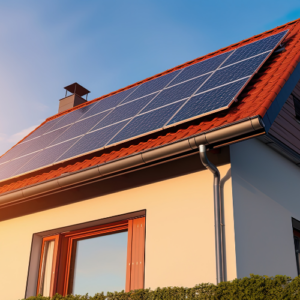 Solar power systems are not one-size-fits-all. Here are the three main types:
Solar power systems are not one-size-fits-all. Here are the three main types:
- Grid-Tied Systems: Connected to the local utility grid. Excess energy is fed back to the grid, and you draw power when needed. Most cost-effective for homes with reliable grid access.
- Off-Grid Systems: Completely independent from the utility grid. Requires battery storage for energy use at night or during low sunlight periods. Ideal for remote locations.
- Hybrid Systems: Combines grid-tied and off-grid systems. Offers the reliability of grid power with the independence of battery storage.
Choosing the Right Solar Power System
When selecting a solar power system, consider these factors:
- Energy Needs: Calculate your average energy consumption to determine system size.
- Budget: Account for upfront costs and long-term savings.
- Location: Ensure adequate sunlight exposure and check local incentives.
- Future Goals: Decide if you want to be completely grid-independent or use a hybrid approach.
Maintenance Tips for Solar Power Systems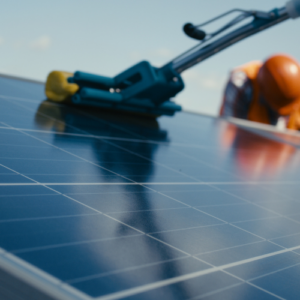
Proper maintenance ensures your solar power system operates efficiently:
- Clean Panels Regularly: Remove dirt and debris to maximize sunlight absorption.
- Inspect Components: Check for loose connections or damaged parts.
- Monitor Performance: Use monitoring systems to track energy production and address any issues promptly.
- Schedule Professional Inspections: Have your system checked annually by certified technicians.
Did You Know?
Did you know that the USA has over 140 gigawatts of solar capacity installed, enough to power 25 million homes? Solar energy is one of the fastest-growing power sources in the country!
TL;DR Summary
- Solar power systems convert sunlight into electricity, offering eco-friendly energy solutions.
- Key components include solar panels, inverters, and optional battery storage.
- Benefits include lower energy bills, energy independence, and environmental advantages.
- The USA offers incentives like tax credits and net metering to promote solar adoption.
- Choose the right system based on your energy needs, budget, and location.
- Regular maintenance ensures long-lasting efficiency and performance.
FAQs
- 1. What are the main components of a solar power system?
The main components include solar panels to capture sunlight, an inverter to convert electricity, mounting systems for stability, optional battery storage for excess energy, and monitoring systems to track performance. - 2. How long do solar power systems last?
Most solar panels have a lifespan of 25 to 30 years, though inverters and batteries may require replacement after 10 to 15 years. Regular maintenance can extend the life of the system. - 3. Do solar panels work on cloudy days?
Yes, solar panels still generate electricity on cloudy days, though at reduced efficiency. Battery storage can help provide energy during low-sunlight conditions. - 4. What is net metering, and how does it benefit me?
Net metering is a program where excess energy generated by your solar system is sent back to the grid, and you receive credits on your electricity bill. It can help reduce energy costs further. - 5. Is solar power installation expensive?
While the upfront cost can be significant, incentives like the Federal Investment Tax Credit (ITC) and state rebates make solar power more affordable. Additionally, long-term energy savings often outweigh initial expenses.
